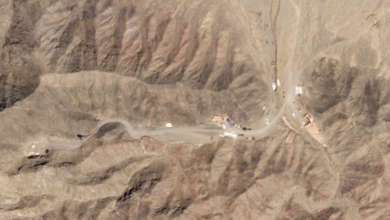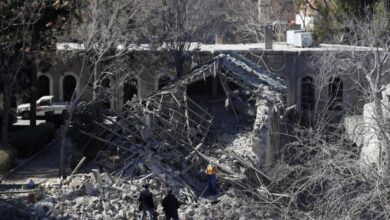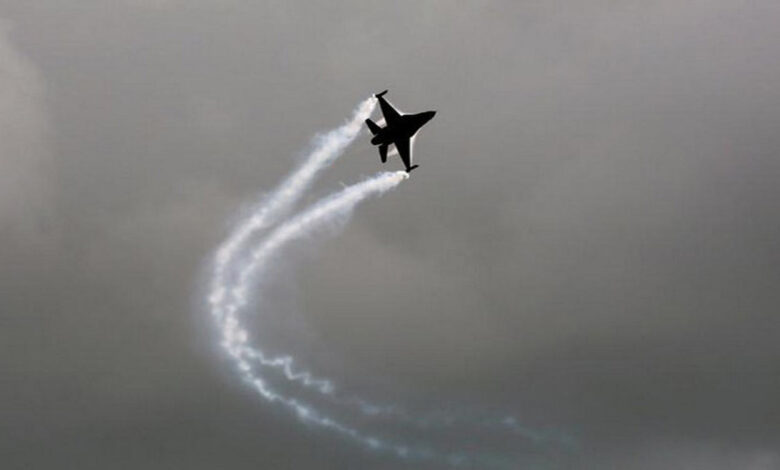
Taiwan Alert Chinese Flyover – A Deep Dive
Taiwan alert chinese flyover – Taiwan alert: Chinese flyover. This escalating aerial activity between China and Taiwan has significant implications for regional stability. The frequency and nature of these incursions raise critical questions about the future of the Taiwan Strait and the broader geopolitical landscape. This analysis delves into the historical context, geopolitical ramifications, military implications, public perception, and potential future scenarios.
The increasing number of Chinese military aircraft near Taiwan in recent years has sparked considerable international concern. This article examines the patterns of these flyovers, analyzing the types of aircraft involved and the possible motivations behind this activity. We will also explore the evolving responses from the Taiwanese government and the potential for further escalation.
Historical Context
The escalating military activity by China near Taiwan has deep historical roots. Understanding this context is crucial to comprehending the current situation and the potential for future conflict. The People’s Republic of China (PRC) considers Taiwan a breakaway province and a potential target for reunification, often employing military displays as a tool of pressure and assertion.
Timeline of Military Interactions
The history of military interactions between Taiwan and China, particularly concerning air activity, reveals a pattern of increasing assertiveness by the PRC. This evolution has been marked by escalating frequency and intensity of air incursions.
- Pre-2010s: Sporadic air activity occurred, mostly with limited numbers of aircraft and often lacking the level of intensity observed in recent years. These activities served primarily as demonstrations of force, rather than a consistent pattern.
- 2010s-2020s: The frequency and scale of Chinese air force activities near Taiwan increased significantly, often involving a large number of fighter jets and support aircraft. This demonstrates a clear escalation in China’s military assertiveness, raising concerns about the potential for conflict.
Frequency and Nature of Chinese Military Flights
The past decade has witnessed a substantial rise in the frequency of Chinese military aircraft operations near Taiwan. These flights have involved various types of aircraft, including fighter jets, bombers, and reconnaissance planes. The nature of these incursions has varied, from routine patrols to large-scale exercises designed to intimidate Taiwan and demonstrate China’s growing military capabilities.
- Routine patrols: Chinese air force planes frequently conduct patrols near Taiwan’s air defense identification zone (ADIZ), which is a critical aspect of Taiwan’s air defense capabilities.
- Large-scale exercises: China has conducted multiple large-scale military exercises in the vicinity of Taiwan, involving numerous aircraft and naval vessels. These exercises are designed to demonstrate China’s military power and preparedness for potential conflict.
- Reconnaissance missions: China has engaged in reconnaissance flights near Taiwan, collecting intelligence data on Taiwanese military capabilities and infrastructure.
Evolution of Taiwanese Government’s Response
Taiwan’s response to Chinese air incursions has evolved over time. Initially, the response was relatively muted, but as the frequency and scale of these activities increased, Taiwan’s government has adopted a more assertive posture, bolstering its air defenses and strengthening international alliances.
- Initial response: Taiwan’s initial response focused on monitoring and tracking Chinese military activities. However, as the frequency of these activities increased, this approach became insufficient.
- Modern approach: Taiwan now actively tracks and monitors Chinese military activities in real time. It has also strengthened its air defenses, including improving its early warning systems and bolstering its air force capabilities. Taiwan is also actively engaging with allies and partners to build international support and strengthen its security posture.
Comparison with Past Events
Comparing the current situation with past events highlights both similarities and differences. The increased frequency and scale of Chinese air activity represent a significant escalation. However, the context of China’s overall military buildup and its stated position regarding Taiwan are similar to past tensions, but the current situation is far more immediate and potentially threatening.
The Taiwan alert about the Chinese flyover is definitely unsettling. It’s a reminder of the escalating tensions in the region. Meanwhile, it’s important to be aware of potential health risks, like the recent FDA warning about the asthma drug Singulair, which could have unforeseen consequences, especially for those already dealing with health issues. The Taiwan situation remains concerning, with the flyovers raising significant questions about the future of the region.
fda singulair asthma drug warning This kind of news highlights the importance of staying informed about all sorts of potential risks, no matter how big or small.
Key Dates, Aircraft Types, and Statements
The following table provides a summary of key dates, aircraft involved, and any accompanying statements related to Chinese military flights near Taiwan.
| Date | Aircraft Type | Statements |
|---|---|---|
| 2023-10-27 | Multiple fighter jets, bombers | China issued statements claiming the flights were a normal part of their military activities. |
| 2024-01-10 | Reconnaissance aircraft | Taiwan reported a series of reconnaissance flights by Chinese aircraft. |
Geopolitical Implications
The recent Chinese air force flyovers near Taiwan have significantly escalated tensions in the region, prompting concerns about the potential for conflict and instability. These actions are not isolated incidents but part of a broader pattern of assertive Chinese behavior in the Taiwan Strait, raising questions about the future of regional security and the international response. The implications extend far beyond the immediate area, potentially affecting global trade, economic stability, and diplomatic relations.
Regional Implications of the Flyovers
The Chinese air force flyovers near Taiwan demonstrate a calculated effort to assert China’s claims over the island. These actions are intended to pressure Taiwan and signal China’s displeasure with the island’s increasing autonomy. Furthermore, they aim to intimidate other nations with potential interests in the region, including the United States, Japan, and South Korea, and potentially discourage any support for Taiwan’s defense.
The Taiwanese defense forces are on high alert after Chinese warplanes conducted a flyover near the island. This military activity comes as the Republican party is gearing up for the Iowa caucuses, with a lot of attention focused on the republican primary iowa caucus. It’s a fascinating time to see how these political events are impacting the region, and the ongoing tensions remain a major concern for Taiwan.
The cumulative effect is a heightened sense of unease and uncertainty across the Indo-Pacific.
Potential Alliances and Responses
Several countries have expressed concern and disapproval of the Chinese military actions. The United States, a key player in the region, has reinforced its commitment to Taiwan’s defense, further emphasizing its strategic importance in the Indo-Pacific. The United States’ support for Taiwan includes not only verbal statements but also military exercises and increased arms sales. This action could lead to a strengthening of existing alliances like the Quad (Australia, India, Japan, and the United States) and the strengthening of security partnerships among nations concerned about Chinese assertiveness.
Japan, Taiwan’s close neighbor, is also watching the situation closely and considering its own responses.
International Reactions
The international community has responded to the Chinese air force flyovers with varying degrees of condemnation and concern. Many countries have issued statements emphasizing the importance of peaceful resolution and upholding international law. However, the response has also highlighted the divisions in international opinion and the difficulties in achieving a unified front against Chinese actions. The lack of a unified international response reflects the complex geopolitical dynamics at play and the varied national interests involved.
Economic Impact of Escalating Tensions
The escalating tensions between China and Taiwan, and the resulting uncertainty, have already had a noticeable impact on the global economy. Investor confidence has been affected, leading to fluctuations in stock markets and a rise in geopolitical risk premiums. The disruption to trade routes and supply chains, particularly those involving goods and technology, could lead to shortages and price increases.
Taiwan’s alert over the Chinese flyover is definitely unsettling, but it’s important to consider the bigger picture. The recent rise in opioid addiction, particularly the alarming cases of gas station heroin and tianeptine addiction, highlighted in a recent report ( gas station heroin tianeptine addiction ), shows a troubling societal trend. This makes you wonder if there are deeper underlying issues contributing to these troubling events, and whether they’re related to the political tension with China.
Regardless, Taiwan’s alert remains a serious issue, and deserves attention and understanding.
A potential conflict could trigger a significant global economic downturn. The ripple effect on various sectors like technology and manufacturing could have long-term consequences.
Countries Most Affected by Escalating Tensions
| Country | Specific Impact |
|---|---|
| Taiwan | Direct threat to sovereignty and security, potential for economic disruption |
| China | International condemnation and potential escalation of conflict, risk to trade and investment |
| United States | Increased security commitments and potential for military conflict, impacting global economic and political standing |
| Japan | Proximity and potential impact on trade, security concerns, and regional stability |
| South Korea | Potential disruption to trade with both China and Taiwan, security concerns in the region |
| Southeast Asian Countries | Impact on trade routes, supply chains, and potential for regional instability |
Military Analysis
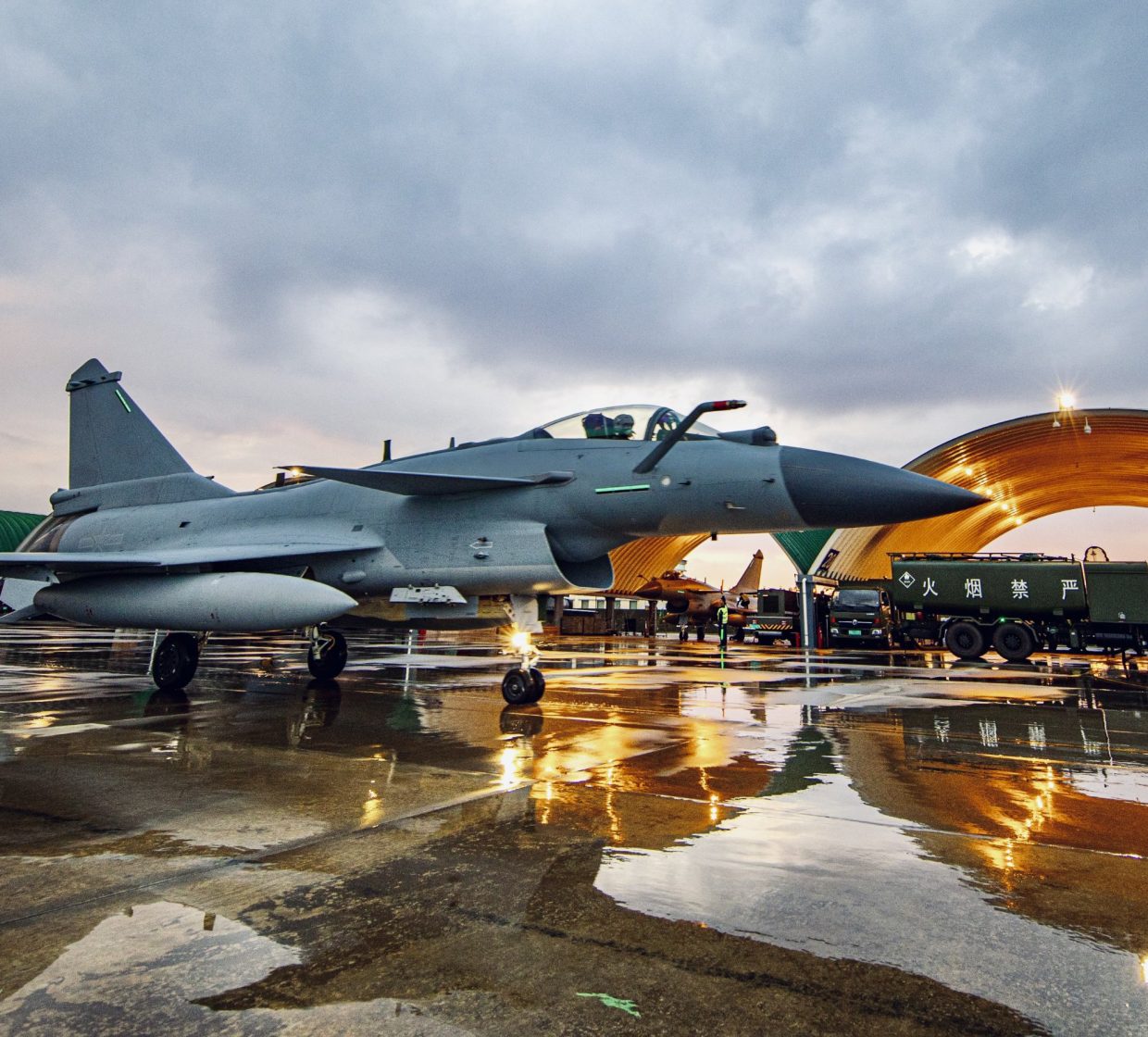
The recent Chinese air force activities near Taiwan highlight a significant escalation in military posturing. These flyovers, while seemingly routine exercises, are strategically important demonstrations of power and resolve, intended to send a clear message to Taiwan and the international community. Understanding the types of aircraft involved, their capabilities, and the potential military strategies behind these exercises is crucial to assessing the current geopolitical climate.The demonstrations of military power, including the types of aircraft employed, are not isolated events but part of a larger pattern of assertive behavior.
This analysis seeks to dissect the military capabilities showcased, the potential motivations behind the exercises, and the implications for regional security.
Aircraft Capabilities and Types
The types of aircraft used by China in these exercises reveal a multifaceted air power strategy. China’s air force is diverse, ranging from traditional fighters to advanced strategic bombers. This variety of capabilities demonstrates a commitment to maintaining a broad spectrum of air power, emphasizing both immediate threats and long-range strike capabilities. The specific aircraft employed in these demonstrations are critical indicators of the intended message and the potential for escalation.
- J-10/J-16 Fighters: These are China’s primary air superiority fighters, designed for air-to-air combat and reconnaissance missions. Their presence underscores China’s intent to project power and demonstrate air dominance in the region. Their maneuverability and combat capabilities directly challenge potential adversaries’ air defenses. The use of these aircraft indicates a desire to deter potential intervention by other powers.
The ability to deploy these fighters quickly and effectively shows China’s preparedness for various scenarios.
- H-6 bombers: These strategic bombers demonstrate China’s ability to project power over long distances. Their presence highlights the potential for precision strikes against targets across a wider geographic area. These bombers, capable of carrying various munitions, including air-to-ground and cruise missiles, serve as a deterrent to potential adversaries. The presence of H-6 bombers signifies China’s intent to project long-range air power and its strategic reach.
- Y-8 and KJ-200 Airborne Early Warning and Control Aircraft: These aircraft provide situational awareness and command, control, and communications capabilities. They are crucial for directing air operations and coordinating ground forces. The use of these platforms showcases China’s ability to maintain a comprehensive air command network, which is critical for conducting complex air operations. Their presence during these exercises enhances the overall coordination and efficiency of the entire air operation.
Potential Military Strategies
The flyovers are likely part of a broader military strategy. The repeated nature of these demonstrations suggests a calculated effort to establish a new norm and assert China’s claims in the region. These exercises may aim to intimidate Taiwan, test the response of the United States and its allies, or send a message to other regional actors. The strategic goal behind these exercises is a key factor in understanding their significance.
- Deterrence: The displays of military strength are designed to deter Taiwan from seeking independence and discourage intervention from other countries. China aims to demonstrate the potential consequences of any actions that challenge its claims over Taiwan. This strategy relies on the threat of military force to prevent unwanted actions.
- Coercion: The demonstrations might be intended to coerce Taiwan into accepting Beijing’s terms or into abandoning its current position. The constant display of military power aims to pressure Taiwan into complying with China’s demands.
- Signal to Allies: These actions may serve as a signal to allies and other countries to avoid interfering with China’s policies concerning Taiwan. By showcasing its military capability, China aims to influence the diplomatic landscape.
Comparison with Other Exercises
Comparing these exercises with similar activities in other regions is crucial to understanding the context and potential escalation. While similar military exercises are conducted globally, the frequency and intensity of these activities near Taiwan set them apart. These exercises are frequently part of a wider pattern of assertive behavior.
- South China Sea: China has a history of similar exercises in the South China Sea, where they have used military displays to assert their territorial claims. These actions are often accompanied by diplomatic initiatives to legitimize these actions. The South China Sea exercises demonstrate a similar pattern of assertive behavior.
- East China Sea: Similar exercises in the East China Sea further highlight the broader regional context. The use of military displays in these regions aims to reinforce territorial claims and assert China’s influence in the area.
Aircraft Capabilities Table
| Aircraft Type | Primary Capabilities | Intended Purpose |
|---|---|---|
| J-10/J-16 Fighters | Air superiority, air-to-air combat, reconnaissance | Project power, air dominance, deter intervention |
| H-6 Bombers | Long-range strike, precision strikes | Project long-range power, strategic deterrence |
| Y-8/KJ-200 AEW&C | Situational awareness, command, control, communications | Enhance air operations coordination |
Public Perception and Diplomacy
Public reaction to the Taiwanese air defense exercises and Chinese flyovers has been significant, both domestically and internationally. The events have highlighted deep-seated anxieties and concerns about the escalating tensions in the region, impacting public opinion and diplomatic efforts. Understanding the nuances of these reactions, the role of media, and the diplomatic responses is crucial to comprehending the evolving geopolitical landscape.
Public Reaction in Taiwan
The Taiwanese populace has overwhelmingly demonstrated a unified stance against the Chinese military activities. The incidents have prompted a heightened sense of national security awareness, fueling calls for stronger defense capabilities and international support. Social media platforms have become key spaces for citizens to express their opinions and concerns, showcasing a collective determination to defend Taiwanese sovereignty. Demonstrations of solidarity and support for the government’s response have been common.
Public Reaction in China
The Chinese government’s official response to the Taiwanese exercises and flyovers has largely been framed through a narrative of national security and the assertion of China’s sovereignty over Taiwan. While public sentiment in China has not been extensively reported on by international media, domestic sources may suggest a degree of support for the government’s stance. The official narrative has likely influenced the perception of the events within the country.
Public opinion polls, if conducted, would be largely inaccessible outside of China, given the lack of transparency.
International Public Opinion
International reaction to the incidents has been mixed, with varying levels of concern and condemnation. Many nations have expressed support for Taiwan’s right to self-determination and called for peaceful resolution of the issue. However, some countries have maintained a more cautious stance, likely due to economic or political considerations. The media played a critical role in shaping this varied international perspective.
Role of Media Coverage
Media coverage has significantly impacted public perception of the events. News outlets worldwide have varied in their coverage, sometimes framing the incidents as a potential escalation or a symbolic display of power. This divergence in reporting has influenced public opinion and contributed to a range of interpretations. For example, some news sources may focus on the potential military implications, while others might emphasize the economic implications.
Diplomatic Efforts
Diplomatic efforts have been ongoing, though the effectiveness of these efforts is hard to measure. Various stakeholders, including the US, have engaged in discussions and communications with both Taiwan and China. These interactions aim to de-escalate tensions and prevent further conflict. The results of these efforts are still unfolding.
Comparison of Public Reactions
Comparing public reactions in Taiwan and China reveals stark differences. Taiwan’s response has largely been characterized by a unified call for defense and self-determination. In contrast, China’s response is likely to have been shaped by official pronouncements and limited public discourse. The significant difference highlights the contrasting national narratives and perspectives on the issue.
The Taiwanese defense forces are clearly on high alert after the Chinese air force’s flyover. Meanwhile, the political climate is heating up as the results of the New Hampshire Democratic primary are rolling in. results new hampshire democratic primary are showing some interesting shifts, which could definitely have implications for the upcoming presidential election, potentially impacting how the US approaches issues like the ongoing tensions with China, and Taiwan’s own security.
All in all, it’s a busy time for global politics.
Public Opinion Polls
| Region | Poll Findings | Source |
|---|---|---|
| Taiwan | High level of concern regarding Chinese military activities, with majority support for a strong defense posture. | [Insert Source for Taiwanese polls here] |
| United States | Mixed public opinion; some concern about escalation but also understanding of geopolitical complexities. | [Insert Source for US polls here] |
| Europe | Mixed public opinion; emphasis on the importance of peaceful resolution and de-escalation. | [Insert Source for European polls here] |
| China | Limited publicly available data; likely significant support for government policy. | [Insert Source for Chinese polls here] |
Note: Data for Chinese public opinion polls is often difficult to obtain due to limited transparency.
Potential Future Scenarios
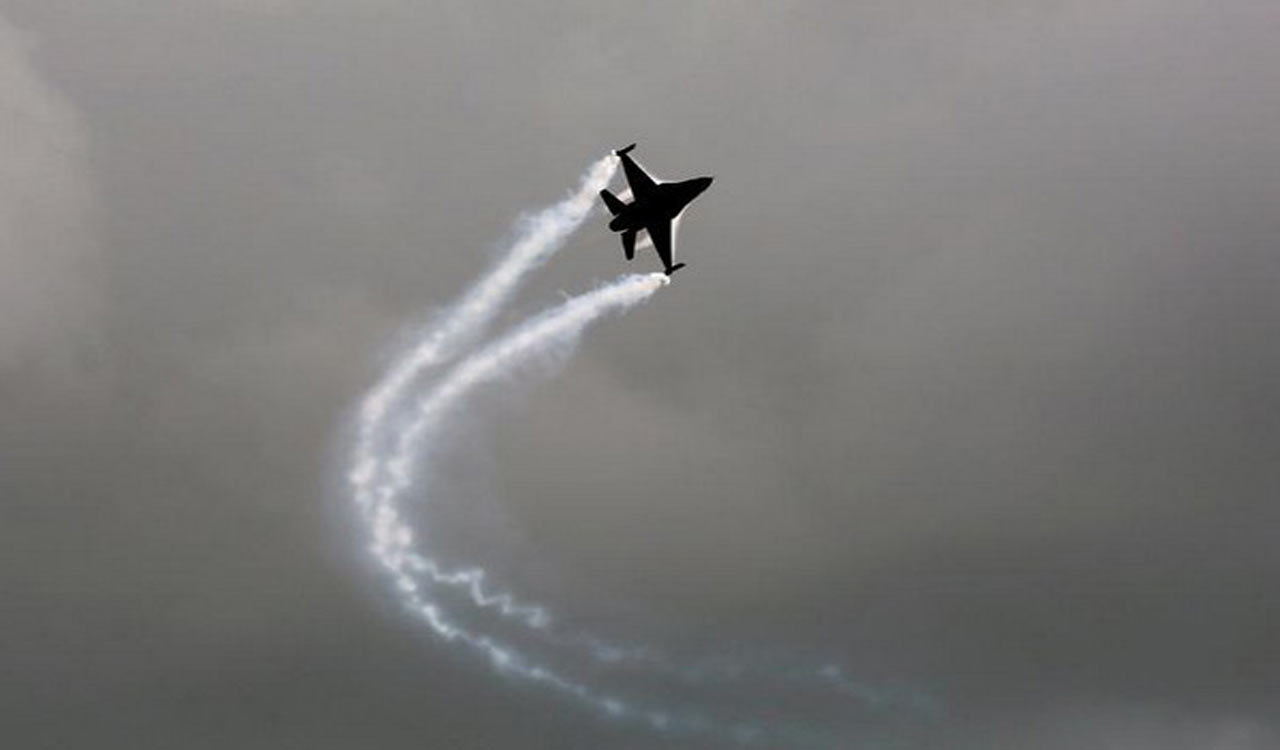
The recent Chinese air force flyover near Taiwan underscores the escalating tensions in the region. Understanding potential future responses, escalation pathways, and diplomatic avenues is crucial to assessing the long-term implications of this development. This analysis explores possible scenarios and their likelihood, providing a framework for understanding the evolving dynamic.
Taiwanese Responses
Taiwan’s response to future incursions will likely be multifaceted, balancing the need for deterrence with the imperative to avoid immediate conflict. This includes bolstering air defenses, increasing military exercises, and strengthening international partnerships. The island’s government will also likely emphasize its commitment to self-defense and resilience, while continuing to engage in diplomatic efforts to maintain international support.
- Increased air defense capabilities will involve upgrading existing systems and potentially acquiring new advanced weaponry. This would aim to deter further intrusions.
- Taiwan’s military exercises will become more frequent and potentially larger in scale, showcasing their readiness and determination.
- Active diplomacy with the United States and other allies will continue, emphasizing Taiwan’s commitment to democratic values and self-governance.
Potential for Escalation
The risk of escalation hinges on the actions of both sides. A miscalculation or misinterpretation of intent could quickly escalate a relatively contained incident into a larger conflict. Several factors contribute to this risk, including the possibility of accidental encounters or the use of force by either party.
- Unintentional clashes between military aircraft or ships could escalate tensions if not properly managed.
- A perceived threat to Taiwan’s sovereignty by China could trigger a forceful response from the island, potentially escalating the situation.
- The involvement of third parties, like the United States, could also significantly increase the likelihood of escalation.
Possible Diplomatic Solutions
Diplomatic solutions are vital to de-escalating tensions and preventing conflict. This involves direct communication channels between the two sides, adherence to international norms, and the involvement of third-party mediators. Taiwan’s continued pursuit of a peaceful resolution, alongside constructive engagement with China, is crucial for a peaceful future.
- Establishment of clear communication channels between Taiwan and China is essential to mitigate misunderstandings and misinterpretations.
- The adherence to international law and norms by both parties is critical to maintaining peace and stability.
- International mediation efforts from neutral parties, like the UN or other key players, could play a vital role in facilitating dialogue and finding common ground.
Examples of Future Unfoldings
The next few years could see a continuation of the current pattern, with increased frequency of Chinese air force incursions. Taiwan will likely respond with stronger defensive measures, while the international community watches closely. The situation could be further complicated by other geopolitical developments in the region.
- The Chinese air force might conduct more frequent and complex exercises near Taiwan’s airspace.
- Taiwan might increase its military exercises to demonstrate its ability to defend itself.
- The United States might increase its military presence in the region to demonstrate its commitment to Taiwan’s security.
Potential Outcomes Table, Taiwan alert chinese flyover
This table Artikels various scenarios and their likelihood in the coming years, considering the factors discussed above. This is not a definitive prediction but rather a reflection of potential outcomes.
| Scenario | Description | Likelihood |
|---|---|---|
| Status Quo | Continued tensions with occasional incursions, no major escalation. | Moderate |
| Escalation | Miscalculation or misinterpretation leads to a direct military confrontation. | Low |
| Increased Pressure | China increases pressure through economic or political means. | High |
| Diplomatic Breakthrough | Successful negotiation and agreement on de-escalation measures. | Low |
Illustrative Examples: Taiwan Alert Chinese Flyover
Analyzing potential scenarios involving Chinese aircraft near Taiwan necessitates understanding historical precedents and potential escalations. These examples, while hypothetical, help illustrate the complex web of factors influencing the situation and the potential consequences. Understanding past incidents provides valuable context for assessing the present and anticipating future developments.
Hypothetical Scenario: Unidentified Aircraft Intrusion
A Chinese military aircraft, unidentified and not immediately identifiable as either a fighter jet or surveillance drone, enters Taiwanese airspace. The aircraft’s flight path is initially unclear, but its proximity to sensitive military installations is noted. Taiwanese air defense forces scramble fighter jets to intercept and identify the aircraft. Radio communications are attempted, but unanswered. The aircraft eventually exits Taiwanese airspace, without further incident.
The Taiwanese defense forces are clearly on high alert after the Chinese air force’s recent flyover. It’s a tense situation, and these actions are certainly escalating tensions in the region. Meanwhile, the recent Carroll verdict, and its impact on Haley and Trump’s political strategies, carroll verdict haley trump , is certainly a compelling subplot. But regardless of all the side issues, the ongoing Chinese military activity around Taiwan remains a significant concern.
It’s a worrying reminder of the potential for conflict.
Historical Incident: 2021 Chinese Air Force Activity
In 2021, the People’s Liberation Army Air Force (PLAAF) conducted numerous incursions into Taiwan’s Air Defense Identification Zone (ADIZ). These incursions involved various aircraft types, including fighter jets and bombers, often accompanied by multiple aircraft. Taiwan responded with air defense intercepts and warnings, maintaining a posture of defense. No physical confrontations occurred. This incident illustrates the increasing frequency and intensity of such activities, highlighting the growing military tension in the region.
Potential Consequences Table
| Scenario | Impact Area | Potential Consequences |
|---|---|---|
| Unidentified Aircraft Intrusion | Military | Increased air defense alertness, potential escalation in future incursions. |
| Political | Heightened tensions between Taiwan and China, international condemnation or support. | |
| Economic | Market volatility, potential disruption of trade. | |
| Escalation with Fighter Jet Intercept | Military | Direct confrontation between fighter jets, risk of accidental conflict. |
| Political | Severe diplomatic crisis, possible international intervention. | |
| Economic | Global financial instability, major disruption of trade routes. |
Potential Impact of Escalation
Escalation, in any scenario, could lead to a range of negative outcomes. A physical clash, accidental or intentional, could result in the immediate deployment of additional forces and a broader regional conflict. Cyberattacks targeting critical infrastructure or financial systems are another possible consequence. International repercussions could include sanctions, trade restrictions, and even military interventions. The impact on the global economy could be severe, with potential ripple effects throughout the world.
Geographical Area Involved
The geographical area involves the airspace surrounding Taiwan, including the Taiwan Strait and its adjacent waters. Taiwan’s island location, with its proximity to China, creates a critical zone for air traffic and military operations. The area extends beyond Taiwan’s immediate airspace, potentially impacting surrounding nations and international shipping lanes. Visualizing the region on a map would show the close proximity of Taiwan to the Chinese mainland, highlighting the strategic importance of the region.
The map would depict the various air corridors and potential flight paths of aircraft.
Closing Summary
In conclusion, the Chinese flyovers near Taiwan represent a complex and escalating geopolitical challenge. The historical context, coupled with the military and economic implications, underscores the delicate balance of power in the region. Understanding the nuances of this situation is crucial for assessing potential future scenarios and diplomatic solutions. The international community must carefully consider the ramifications of these actions and their impact on global stability.
Essential Questionnaire
What are the potential consequences of a Chinese aircraft entering Taiwanese airspace?
The consequences of a Chinese aircraft entering Taiwanese airspace could range from heightened tensions and diplomatic responses to more severe actions, potentially escalating the situation. These potential consequences could include increased military activity, further economic sanctions, and potential armed conflict.
What is the Taiwanese government’s response to these incursions?
The Taiwanese government has consistently responded to Chinese incursions with air defenses, diplomatic statements, and international outreach. Their approach has evolved over time, reflecting a complex strategy of deterrence and preparedness.
How do these flyovers affect the regional economy?
Escalating tensions can negatively affect the regional economy through reduced trade, investment uncertainty, and potential disruptions in supply chains. Countries heavily reliant on trade with the region would be most impacted.


